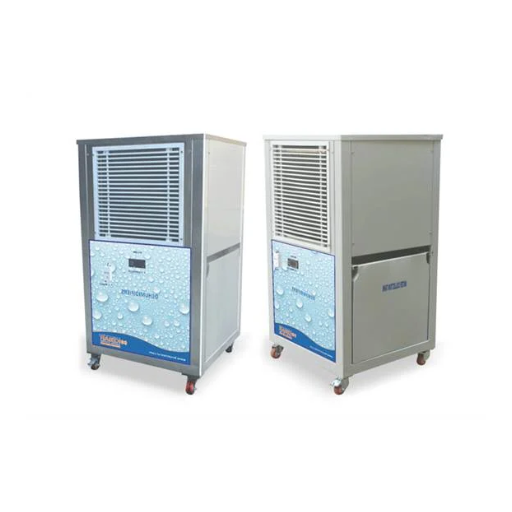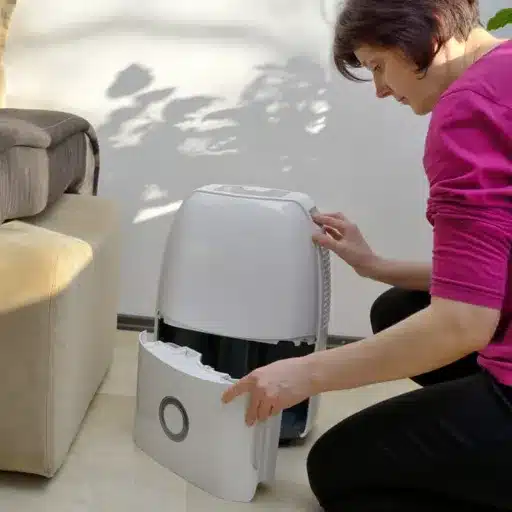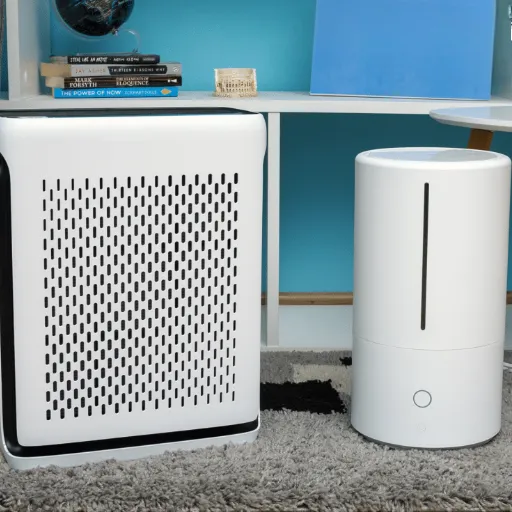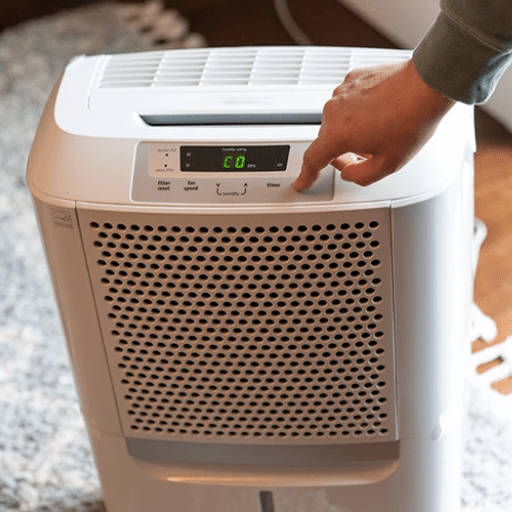Maintaining the right humidity levels in gyms and indoor pool areas is essential for ensuring the comfort, safety, and longevity of the environment. Excessive moisture can lead to issues such as mold growth, structural damage, unpleasant odors, and even health concerns for occupants. To address these challenges, industrial-grade dehumidifiers are a critical investment, providing high-performance solutions tailored to the demands of large-scale, humidity-prone spaces. This article will explore the best industrial dehumidifiers designed specifically for gyms and pool environments, offering insights into their key features, benefits, and how they contribute to optimal indoor air quality. Whether you’re a facility manager or a business owner, this guide will equip you with the knowledge you need to make an informed decision about controlling humidity effectively.
Why is a dehumidifier crucial for an indoor pool?
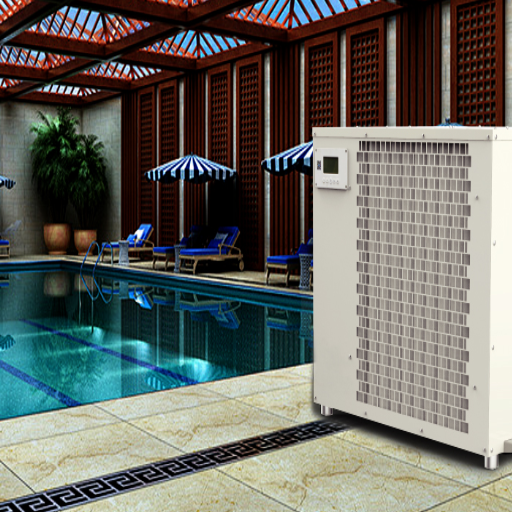
Understanding humidity control in indoor swimming pools
Humidity control in indoor swimming pools is very important in maintaining an environment that is safe, comfortable, and energy-saving. Without a suitable control, excess humidity will cause surface condensation, damage to the building structure, mold, and bacteria growth, all of which would adversely affect the pool facility and its users. Hence, a dehumidification system must ensure air quality and structural integrity.
A good dehumidifier regulates humidity inside by removing moisture from the air. The indoor pools, with ever-present evaporation from the water surface, experience a very high rate of humidity. The process intensifies in warm environments and when water temperatures are higher; hence, dehumidification is essential to control moisture build-up. Controlling humidity in the 50% to 60% range prevents condensation on walls, windows, and ceilings, thereby protecting against corrosion and the degradation of long-term infrastructure.
Proper humidity control also enhances energy savings and operational costs. Dehumidifiers that come with the heat recovery system recover energy from the dehumidification process and use it for heating the pool water or indoor air, thus cutting down operational costs. In addition to safeguarding health and infrastructure, humidity control systems enrich the comfort of users so that they may live longer and sustain the facility.
The role of dehumidification in preventing mold growth
The role of dehumidification in mold prevention is carried out by keeping the indoor humidity at optimum levels. Mold grows with a relative humidity of 60 and above, usually when warm temperature interacts with organic material such as wood or fabric. When humidity is lowered to around 40-50%, dehumidification stops any germination and subsequent growth of mold spores, thereby lessening its risk.
High moisture is all the more conducive for mold to form condensation on surfaces, thus furthering its existence. When moisture settles on walls, ceilings, or flooring, it becomes the perfect breeding spot for mold, and more often than not, most of these locations are ignored until mold has done substantial damage. The dehumidification systems come into action to restore balance by pulling out the excess moisture from the air, thus taking away one of the major factors leading to a mold outbreak.
Also, dehumidification safeguards the environment by making it less conducive to mold spores. This is because mold growth releases allergens and irritants that pose health threats to people with respiratory problems or compromised immune systems. Hence, dehumidification aids in protecting the structure from mold damage and ensuring occupant well-being, thereby guaranteeing an injury-free indoor environment.
Benefits of maintaining dry air in indoor pool areas
Maintaining a dry atmosphere in indoor pool facilities is crucial when it comes to unwanted humidity levels associated with wetness. Increases in moisture levels in such surroundings promote the removal and replacement of corrosion from structural materials, including steel, aluminum, and concrete, thereby preserving the durability of the facility over time. Dry air increases the lifespan of critical infrastructure and lessens the cost of repairs for damage caused by moisture.
Humidity control-related comforts and safety issues must be considered for illegal environments. High humidity conditions make surfaces slippery, contributing to accidents like slips and falls. Dry air increases evaporation of water from the surfaces, thereby lessening dangers surrounding the pool areas that are already damp.
Indoor air quality is further enhanced by the regulation of relative humidity. Once the moisture level is too high, mold, mildew, and detrimental bacteria will develop, especially in unreachable places. These agents may induce or aggravate the respiratory ailments or allergies of an occupant. Hence, dryness promotes a healthier and pleasurable, rewarding atmosphere for both visitors and employees alike. Accordingly, suitable humidity management keeps structural integrity while ensuring safety and better air quality in indoor swimming facilities.
What should gym owners know about industrial dehumidifiers?
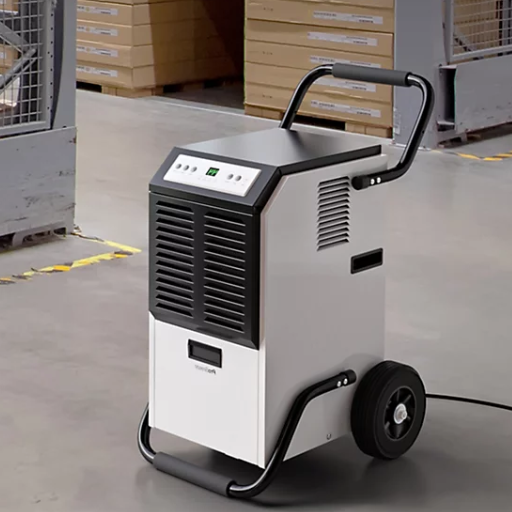
Choosing the right commercial dehumidifier for fitness centers
Appropriate commercial dehumidifier selection for any fitness center depends upon a careful assessment of the facility’s size and design, alongside its humidity management requirements. Fitness centers pour a lot of moisture into the atmosphere due to heavy occupancy, active workouts, and the presence of showers and pools. An ideal commercial dehumidifier would keep the humidity levels in check while ensuring air quality and energy conservation.
The rated capacity of the commercial dehumidifier is determined by the number of pints or liters of water removed in one day. A bigger capacity dehumidifier would be unsuitable for a smaller gym, and vice versa. Next comes the airflow efficiency, where a higher cubic feet per minute (CFM) rating would mean better air circulation throughout the facility. Newer dehumidification equipment is equipped with features such as intelligent sensors to keep an eye on humidity levels, auto-drainage mechanisms to reduce toil, and modes that save energy to cut down operational costs.
Research indicates that the ideal humidity level indoors that limits mold growth and lends comfort to gym members is between 40% and 60%. Moreover, places like gyms, bathing in heated indoor pools or saunas, might require an additional counterpart of a big dehumidification system and ventilation solution. Having a louder roar of an expensive commercial dehumidifier, therefore, ensures that gym proprietors shield their respective gyms from untoward damages, further trimming much of the repair costs and, shall we say, making it a healthier place for its members.
How to manage humidity levels to protect gym equipment
Effectively managing humidity in gyms safeguards equipment and fosters an appropriate environment for fitness exercises. The first step should be to install a high-efficiency HVAC system with control settings to maintain an RH range from 40% to 60%, as recommended by authoritative standards. This range prevents excess moisture, which increases the chance of rusting or corrosion on metal parts of the equipment, and it also prohibits too dry conditions under which the rubber or leather parts undergo cracking.
Moreover, smart humidity monitoring systems equipped with IoT sensors help keep moisture levels in real-time, tracked for different zones inside the facility. At the slightest deviation within the zone, these systems either trigger the ventilation systems or ask the dehumidifiers to work, thus assuring excellent and precise control. Commercially designed dehumidifiers work best for high-traffic areas where humidity levels tend to build up quickly with perspiration and water usage, such as weight rooms and locker rooms.
Maintenance is key for the gym equipment in resisting the effects of humidity. For instance, the standard recommendation is that machines be wiped down after use with disinfectant cloths to ensure hygiene and reduce long-term moisture exposure. Separate moisture control zones for aquatic areas in pools may further hold back humidity carry-over into other parts.
Emerging energy-efficient technologies, such as energy recovery ventilators (ERVs), maintain optimum airflow while conserving energy through heat exchange. This results in lowering operational costs from an environmental standpoint. Combining these facilities will grant gym owners a fledgling investment protection tool, while also being a big plus for member satisfaction and extending equipment life.
Impact of high humidity on indoor air quality
High humidity in indoor environments severely deteriorates air quality and tends to bring numerous problems to human health and structural safety. From a medical point of view, an increase in moisture initiates mold, mildew, and dust mite growth, these organisms being common allergens capable of exacerbating respiratory conditions such as asthma. Further, excessive moisture allows certain bacteria and viruses to thrive, thus increasing the incidence of airborne diseases.
Another way humidity endangers structure is by constantly subjecting the building materials to moisture, which, in turn, brings about the proliferation of wood rot, corrosion of metal components, and warping of surfaces. Usually, high humidity causes condensation on windows and walls, which turns into a nightmare for water penetration and damage. The indoor air feels heavy and uncomfortable, reducing occupant satisfaction.
Hence, ideal indoor conditions suggest maintaining a relative humidity level between 30% and 50%, which would mitigate the above hazards and ensure the HVAC systems function at their peak. Environmentally, anything beyond the stated limits of humidity puts a tremendous vertical load on ventilation systems, making them useless to filter the air and heat consumption energy waste. Solutions like dehumidifiers, together with real-time humidity sensors, must be deployed to maintain proper balanced indoor environmental conditions to enhance air quality and avert longer-term damage.
How do swimming pool dehumidifiers work?
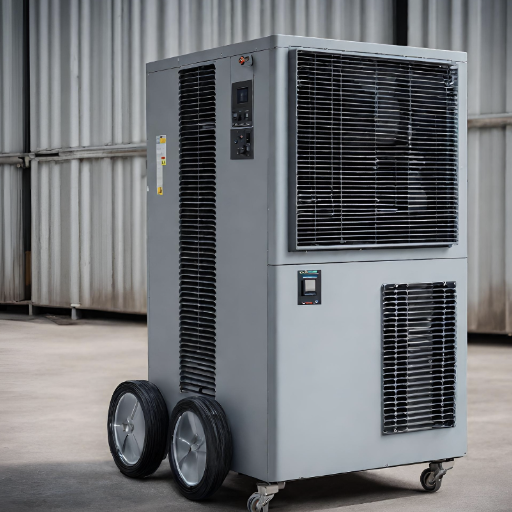
The dehumidification process explained
A swimming pool dehumidifier works by extracting excess moisture from the air to keep humidity levels in indoor swimming pool environments at an optimum level. The process commences with the intake of humid air by means of a system of fans or ducts. The air is drawn over an evaporator coil that has been maintained at a temperature below the dew point of the air under consideration. When air passes over the evaporator coil, whose surface temperature is lower than the dew point of the air, moisture condenses out of the air, thus reducing the humidity of the air. The condensed water is usually drained off or sometimes channeled for other secondary uses, such as flushing systems, depending on the design of the particular unit and energy efficiency features.
The now moisture-free air is reheated to a comfortable temperature for indoor ambiance by passing over the condenser coil, without allowing any typical loss of heat in the controlled space. Sophisticated units often feature heat recovery devices to enhance energy benefits. The heat recovered during dehumidification is reused for other purposes, thus conferring energy cost savings on the unit without performance compromise. This dual capability makes it a humidity controller and at the same time also helps in moderating the temperature within the pool ambiance.
In the modern age, dehumidifiers use digital controls and real-time humidity sensors to maintain a dynamic balance by automatically adjusting their capacity in response to environmental conditions. Features such as variable speed compressors are provided so that energy consumption is minimized during both low and high demand scenarios, thus making consumption directly proportional to present requirements and hence eliminating any wastage. These advanced models also allow for BMS integration for central monitoring and control, thereby enabling automated performance data logging, inefficiency identification, scheduling of preventive maintenance, etc., thereby helping maintain the quality of air and integrity of structure.
Differences between desiccant and refrigerant systems
Being extremely potent in low-temperature and extreme weather conditions, desiccant systems are best; refrigerant systems are better realized energy-wise in mild temperatures.
|
Aspect |
Desiccant |
Refrigerant |
|---|---|---|
|
Mechanism |
Adsorption |
Condensation |
|
Temp Range |
Low (<15°C) |
Moderate (>15°C) |
|
Efficiency |
Higher energy |
Lower energy |
|
Sound |
Quieter |
Louder |
|
Install |
Simple |
Moderate |
|
Price |
Higher initial |
Lower initial |
|
Dry Level |
Very low RH |
Moderate RH |
|
Upkeep |
Similar |
Similar |
|
Footprint |
Larger |
Compact |
|
Heat Gen |
Higher |
Minimal |
Integrating dehumidifier machines in commercial pool environments
Incorporating dehumidifier systems within commercial pool arenas has become an increasingly challenging task as it demands a thorough analysis of the technical requirements and operational conditions for maintaining good air quality and appropriate air humidity. Key considerations affecting the selection of a system are area size, anticipated moisture load, energy consumption, noise constraints, and so forth.
Desiccant dehumidifiers are suitable for very low RH conditions since they function well at low temperatures (<15°C) and offer silent operation. Nonetheless, initial capital costs and the larger footprint of desiccant systems need to be contemplated during the early design and budgeting exercise. On the other hand, refrigerant dehumidifiers are a more compact and cheaper option when moderate-level control is required for spaces with temperatures above 15°C. Such systems are simpler to install and require less commitment of funds upfront, but they are somewhat noisy, and located inside or close to an area sensitive to this noise, sound suppression treatment may be needed.
Heat generation and the efficiency of energy use are yet other factors to consider. The operation of desiccant systems releases heat into the environment, which could aid with other temperature management needs and, therefore, lessen the need for heating in colder climates. Meanwhile, refrigerant systems release little or no heat and would be preferred if it were important to maintain an even temperature within the space.
Use of newer monitoring and automation technologies, including real-time humidity sensors and programmable control systems, adds greatly to the efficiency and convenience of operation of these dehumidification systems. Combined with an ongoing maintenance regime, a system like this will offer long-term functionality at a lower cost while providing a nicer pool ambience for both patrons and staff of commercial pool facilities.
What are the benefits of ceiling-mounted dehumidifiers?
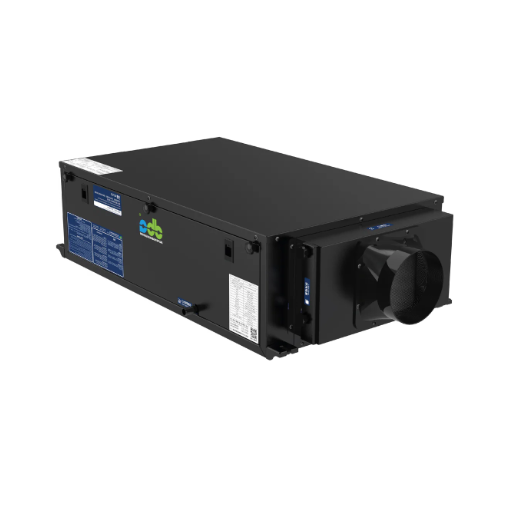
Maximizing space in indoor pool environments
Compared to all other types of dehumidifiers, ceiling-trained ones optimize space in the indoor pool ambiance. When systems are installed overhead or suspended from the ceiling, the floor and wall areas remain fertile for use towards other critical facility necessities such as storage, seating, or the placement of safety equipment. This is very useful in commercial pool facilities where every inch of usable square footage is important to maximize. Owing to the elevated positioning, the dehumidifier thus remains out of patrons’ reach, whereas the chances for accidental tampering or damage reduce considerably, which also extends the life of the equipment.
Ceiling systems under standard operating procedure heighten air circulation from a technical perspective. Above the pool area, ceiling dehumidifiers thus draw in hot, moisture-laden air that naturally rises, hastening the dehumidification of the entire ambience. This averts condensation on ceilings, walls, and other surfaces that may lead to structural damage in due course. The new ceiling-mounted dehumidifiers, equipped with an advanced air management technology, allow installing facilities with uniform humidity control while maintaining the required temperature.
On another note, another advantage of ceiling-mounted dehumidifiers is their unobtrusive design, which increases the whole ambience around the pool. Floor or wall-mounted systems come in the way of an open, clean design of the pool area, unlike these. Besides, many modern units have sleek and low-profile designs, which can be integrated with suspended ceilings so that their visibility can be reduced further. For the management, it is this combination of functionality with aesthetics that makes ceiling-mounted dehumidifiers the perfect choice to keep a balance between operational efficiency and user satisfaction in an indoor pool setting.
Efficient humidity control with ceiling installations
Developed for specific moisture control needs and installed overhead, dehumidifiers are a more effective alternative for maintaining pools. These work by bringing in air that is laden with moisture, cooling it to allow condensation of steam in it, and then recirculating the air to the room as removed. This method keeps the humidity in the buildings at its peak levels and prevents emerging issues like mildew, oxidation, and the collapse of stability due to high moisture presence in buildings for an extended duration. Therein lies the technology featuring the active moisture leaks correct age method that can alter its dehumidification engineering in order to properly put control of both the people and the equipment in the room. Further on, in recent days, technological advancements in the area of overhead dehumidification have come with solutions that optimize low temperatures.
A good number of units that are available now come with variable speed compressors and other smart sensors in the unit, enhancing energy control that reduces energy consumption. It is also easy to have exact control over the consumption of energy, and this can be achieved by making sure that the use of some systems that consume energy is reduced when needed. In large enclosed pools, however, the concept of a building management system, also known as a BMS, is employed to further improve the depletion operations monitoring and control, as there are various humidity levels across different zones. Concerning the improvements that enhance cost and energy minimization in humidification, Modern ceiling dehumidifiers look as though they meet quality grades and designs that comply with green building standards, as they enhance performance as well as they emphasize energy efficiency.
From a standpoint related to the construction, the turnover is absent, which is quite significant. Due to these enterprise ceiling-mounted systems occupying some void space, unlike the common floor. Ceiling systems are integrated in such a way that they are concealed in the given room. Their design, in particular, their size and shape, is an effective way of maintaining the distinct architectural look characteristic of some top-quality pools and leisure centres, hence playing a significant role in their operational ability in these high-end areas. These are in addition to their strong features and diminishing way of operation, why up-to-date ceilings have now become interconnected with efficient humidity control in any modern Olympic pool.
How do commercial dehumidifiers control indoor humidity levels?

Features to look for in the best industrial dehumidifiers
In choosing an industrial dehumidifier, it is important to consider features which will help to enhance its operation, construction investment, and input effectiveness, and in this way, its life-time performance. The most important features include those listed below, which should be given high priority for the best performance or even operation of an industrial dehumidifier:
- Capacity and Coverage Area: Choose a model of the dehumidifier with a relevant moisture removal capacity because it is used in pints or liters per day per square foot, in addition to wet conditions in a room. The high-capacity dehumidifiers are very significant in large industrial uses, storage buildings, and in the production area, mainly because there are machines and manufacturing equipment whose optimal performance requires conditions of controlled humidity.
- Energy Efficient: Get units with energy ratings or enhance energy-saving technology, such as the adaptability of the compressor. This helps in the reduction of operating costs while keeping the levels of humidity constant.
- Durability and Build Quality: The industrial dehumidifiers ought to be made using rugged and non-corrosive materials that are fit for the environments they are in. It is recommended to use good-quality steel frames and, where necessary, reinforced housings to provide long-term reliability.
- Advanced Humidity Control Systems: Built-in hygrometers and electronic systems allow absolute control over the relative levels of moisture (RH) in the surrounding. Additionally, more advanced industrial dehumidifiers have a control function that is operated from a distance to allow the identification and rectification of humidifying issues.
- Smart Technology Integration: These days, industrial dehumidifiers have many advanced features like IoT monitoring systems, which provide instant information regarding the humidity levels, the condition of the system, and the schedules of maintenance through either mobile APPs or desktop APPs. They help in the control of the operation and also detection of potential failures in the systems, even before the actual failure occurs, and therefore, the maintenance becomes easy.
- Ease of Maintenance: The dehumidifiers that can be cleaned with ease, have convenient filters, and may include a pump for water disposal and a gravity drain system in the wall shall be selected to avoid spending much time in performing repairs and searching for where such repair should be done.
- Noise Level: Industrial dehumidifiers are somewhat noisier than the residential systems. Including the specifications for such quiet feature units will have an added advantage in cases where higher audibility of operation is undesired, such as office and indoor commercial buildings.
- Safety Features: Good dehumidifiers are designed with some crucial characteristics, such as automatic on once mains power is restored, prevention of overloading, and installation of alarms in the dehumidifiers for full tanks and system breakdowns. These are very necessary to enhance equipment safety, especially in industrial settings where the working environment is complex.
- Portability and Installation Options: Such use options such as caster wheels and forklift grooves for large or modular spaces, but also to ease the system of entire relocation. In enclosed areas and some cases, consideration should be taken for the wall or ceiling options as they contribute to the management of available/useable space
Such considerations help assure that the selected industrial dehumidifier as minimum conforms to the operational requirements and allows for the economical use of energy and resources, in support of the advanced technologies used in functionality and operation of modern industrial installations.
Maintaining optimal pool room conditions with dehumidification systems
However, mainly I am directed toward controlling dampness in a pool room because an excess of dew point often causes damage to the building materials, causes corrosion, and due to the environmental factors, tends to increase the air humidity. Using the right dehumidification system prevents the indoor moisture, allowing indoor relative humidity to hover within the acceptable levels, which would normally be from 50% to 60%. Doing so also makes it difficult for problems like molds and sweaty walls to happen, besides providing a conducive environment for the users.
Part of my detailed attention is to work out the proper sizing and arrangement of the dehumidifiers in place. When fitting the equipment, it is important to use the right equipment according to the use and size, even if every large space is a swimming pool. Distributing the walls also allows the ventilation ducts and coils to be arranged opposite to openings and returns to prevent undesirable air dosages and the subsequent accumulation of unwanted moisture. Dusting after regular intervals helps clean or replacement of filters and other components so that the system continues to achieve the requirements of the project and at the same time prolongs the useful life of the equipment at hand.
Lastly, I integrate the dehumidification system into a broader energy management framework. Most new projects incorporate a regeneration process in order to recycle the heat produced during dehumidification for either heating up water or air. These systems help me minimize the usage of energy as well as control operational expenses and ensure normal temperature and humidity levels. This defense sets every measure to make sure that the pool room is always warm and not only preserved but also of low energy demand and an impressive recreational environment.
Long-term benefits of moisture control in commercial settings
It is necessary to address the control of moisture in commercial structures to be able to help with the maintenance of the structure as well as the turnover nature of it towards effective cost management. High moisture content in the air imposes a lot of aggression on several materials within, especially those made of wood, drywall, and any metallic materials, which will eventually lead to instances where the repairs are done prematurely. The adoption of modernized moisture control systems, among other strategies implemented in the commercial sector, enables enterprises to increase the longevity of their buildings and, in doing so, reduce the number of renewal works aimed at maintaining these buildings, which are the financial investments made in them.
Moreover, effective moisture regulation is also aimed at achieving the already mentioned goals for people’s health and safety in offices; this goal is the provision of comfortable and healthy indoor air quality (IAQ). Any excessive moisture promotes the growth of various molds, mildews, and bacteria that harm the health of the personnel and the visitors, which can lead to more severe problems, including asthma and allergic reactions. The maintenance of such humidity levels prevents such damage to the building and consequently makes the working area one in which people can work comfortably and with some efficiency. In addition, good IAQ minimizes health and safety issues, hence there is less overall burden in that regard.
Another advantage of having good moisture control in the building relates to energy usage, as there would be a reduction in the quantity of work HVAC services have to do. When there is ineffective control of moisture inside a building, the HVAC equipment may require a higher amount of power since it would have to heat, cool, or ventilate the entire building so as to have the minimum and acceptable atmospheric conditions, leading to high power consumption and operational costs. Advanced dehumidification systems can recover the heat generated by the equipment during the cooling process almost completely, which in the long run improves the effectiveness of the energy in the structure. The impacts of such improvement go straight to the financial performance of a company and serve as a step towards the achievement of sustainability goals, as less carbon is produced.
References
-
Analysis of Desiccant Dehumidification for use in The Waverly on Lake Eola – A detailed study on desiccant systems and their dehumidification processes.
-
Evaluation of Dampness-associated Respiratory Symptoms with Relocation of Staff During Remediation of an Elementary School – Discusses the role of dehumidifiers in improving air quality.
-
Planning Facilities for Athletics, Physical Education, and Recreation – Covers facility planning, including considerations for pools and athletic spaces.
Frequently Asked Questions (FAQ)
Q: What are the benefits of using a dehumidifier dryer in gym facilities?
A: Dehumidifier dryers help by removing excess moisture from the air, which creates a healthier workout environment. They reduce moisture buildup that can cause discomfort and prevent corrosion of gym equipment.
Q: How do dehumidifiers reduce moisture in indoor pool areas?
A: Indoor pool dehumidifiers are designed to manage poolside humidity by efficiently removing water from the air. This prevents high humidity levels that can lead to health risks and costly repairs.
Q: Why is controlling humidity important in commercial air environments?
A: Controlling humidity in commercial air environments is crucial to prevent moisture buildup that can lead to mold growth and structural damage. Dehumidifiers are ideal for maintaining a comfortable environment and ensuring the reliable performance of HVAC systems.
Q: How does a dehumidifier with a water tank function?
A: A dehumidifier with a water tank collects water from the air as it reduces moisture. The tank stores this water until it can be emptied, ensuring continuous operation and a reduction in indoor humidity.
Q: Can using an air conditioner alone manage high humidity levels?
A: While an air conditioner can help cool the air, it is not as effective as a dehumidifier at removing excess moisture. Dehumidifiers are specifically designed to target moisture in the air, making them more efficient at reducing humidity levels.
Q: What is a set point in the context of dehumidifiers?
A: The set point is the desired humidity level that a dehumidifier aims to maintain. Setting an appropriate set point helps ensure a comfortable environment and prevents issues related to high humidity.
Q: How do dehumidifiers help prevent health risks in gyms and pools?
A: Dehumidifiers help by minimizing moisture in the air, thereby reducing the growth of mold and bacteria. This creates a healthier environment, reducing health risks for users of gyms and indoor pools.
Q: Why are dehumidifiers considered a good investment over time?
A: Dehumidifiers are considered a good investment over time because they help prevent costly repairs associated with moisture damage. By maintaining optimal humidity levels, they also contribute to the longevity of equipment and facilities.
Q: How do dehumidifiers contribute to a comfortable environment?
A: Dehumidifiers contribute to a comfortable environment by removing excess moisture from the air, preventing conditions that cause discomfort, such as clammy skin and stuffy rooms. This creates a more pleasant indoor atmosphere.
Q: What specific problems can indoor pool dehumidifiers address?
A: Indoor pool dehumidifiers address problems such as poolside humidity, which can lead to mold growth, corrosion, and unpleasant odors. They ensure a balanced and controlled humidity level, enhancing the overall pool environment.

